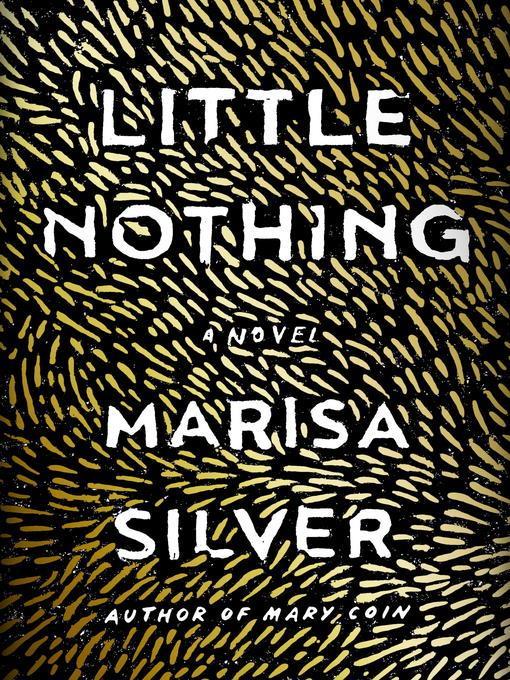
Little Nothing
کتاب های مرتبط
- اطلاعات
- نقد و بررسی
- دیدگاه کاربران
نقد و بررسی

July 25, 2016
Silver’s (Mary Coin) latest novel reads like a fairy tale, following two characters in a time and place that may be a century ago, and may be Europe. Pavla is born a dwarf with a lovely face. Danilo is a tinkerer indentured to a charlatan, Dr. Smetanka, in order to repay a family debt. Pavla’s aging parents bundle her onto a wagon and into the evil arms of Smetanka, seeking a cure. Smetanka orders the handy Danilo to build a moving table that becomes an instrument of torture, transforming Pavla into the first of her several incarnations. Smetanka forces Pavla on stage with Danilo as part of his freak show, though their pantomime is also a love story of sorts. Each actor loves the other, but neither has the self-confidence to declare it off stage. One tragedy after another separates the star-crossed lovers in a strange series of incidents and reincarnations. Pavla serves to remind readers of the moral of the story, that a good soul can find transcendence in the face of unbearable odds. And in Danilo readers will recognize their own longing for transcendence and meaning as he transforms himself through pain and sorrow into a man of courage and ingenuity. Agent: Henry Dunow, Dunow, Carlson & Lerner.

July 1, 2016
A postmodern fable by the award-winning author of Mary Coin (2013) and The God of War (2008).A childless couple longs for a baby.... This desire launches a thousand fairy tales, including "Thumbelina," which Silver slyly invokes at the beginning of her new novel. As the elderly Agata Janacek struggles through labor, the midwife encourages her to think of a flower blooming--an echo of the tulip from which Hans Christian Andersen's diminutive heroine emerges. But, just as childbirth is not the gentle opening of a flower, the baby Pavla is not a perfectly formed little sprite. She's a dwarf, all big head and foreshortened limbs. These opening scenes reveal a lot about the story to come. First, that the author is using tropes from fairy tales and folklore in a realist mode. Second, that the novel's brand of realism relies heavily on graphic depictions of human bodies and their various products. There are pendulous breasts, flaccid penises, and Agata's pubis with its sparse graying hair. There's also quite a bit of sweat, mucus, and ordure. Pavla, as befits a fairy-tale heroine, is beautiful--but only sometimes. As her story progresses, she will undergo several transformations, only some of which make sense. Of course a girl being raped might turn into a wolf. But why would a dwarf stretched on a rack turn into a girl with a beautiful body and a canine face? It might seem ridiculous to argue with fantasy, but fairy tales do have their own logic, and Silver doesn't quite seem to grasp that internal consistency is a large part of the fairy tale's appeal, nor does she seem to appreciate how fairy-tale heroes and heroines function. Because they are types rather than real people, they allow us to project our own desires upon them. Pavla is real enough to forestall this operation but not real enough to be satisfying. Disappointing and often just kind of gross.
COPYRIGHT(2016) Kirkus Reviews, ALL RIGHTS RESERVED.

October 1, 2016
Farrier-turned-plumber Vaclav Janacek and wife Agata are loving parents to Pavla, their only child, in an indeterminate Slavic village sometime near the beginning of the 20th century. Pavla is a dwarf, nicknamed "Little Nothing," and beloved for her ethereal beauty and good nature. Worrying about her fate after their passing, the elderly Janaceks decide to "fix" her, employing dubious folk and pseudo-medical "remedies." Thus begins the first in a series of startling transformations as Pavla begins evolving in a decidedly lupine direction, traveling with a circus sideshow and even joining a wolf pack. Here the tale becomes as much that of Danilo, the teenage "doctor's assistant" who first meets Pavla in the midst of a brutal "stretching" attempt and falls in love with her. Their paths diverge and cross as war and terror envelop the land, leaving Danilo to wonder if Pavla--in any form--was ever real at all. This is a tale of transformation, but does the mix of fairy tale and stark reality best serve the theme and these characters? VERDICT Best-selling and award-winning author Silver (Mary Coin; The God of War) has created a haunting tale of magic realism, both fabulist and earthy. Readers will need to decide if the transition from Pavla's story to Danilo's is entirely satisfying. [See Prepub Alert, 5/21/16.]--Jennifer B. Stidham, Houston Community Coll. Northeast
Copyright 2016 Library Journal, LLC Used with permission.

August 1, 2016
Silver, the author of Mary Coin (2013), spins a fable-like tale of two star-crossed lovers in Eastern Europe in the early twentieth century. Pavla is the much-longed-for, late-in-life child of a plumber and his wife, who are chagrined to discover the daughter they tried so hard to have is a dwarf. Though they grow to adore Pavla, and she becomes something of an apprentice to her father, when she becomes a teenager, they take her to a series of medical people in the hopes of finding a cure for her dwarfism. One unscrupulous doctor forces his young assistant, Danilo, to build a mechanical table that will stretch Pavla. Danilo and Pavla are drawn to each other, but his device not only stretches Pavla's body but it also transforms her into a wolflike woman. Forced to join a traveling freak show with the doctor, Pavla and Danilo circle each other but never quite come together until another startling transformation rips them apart, sending Danilo on a quest to find his lost love. Silver has created a gorgeously rendered, imaginative, magical yarn.(Reprinted with permission of Booklist, copyright 2016, American Library Association.)

























دیدگاه کاربران